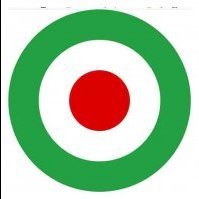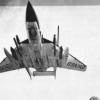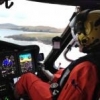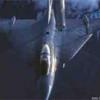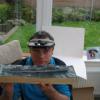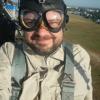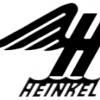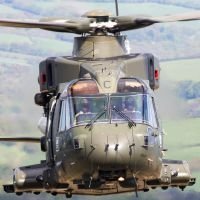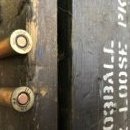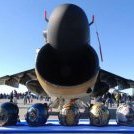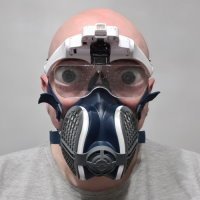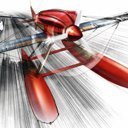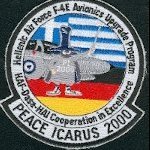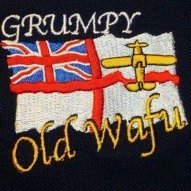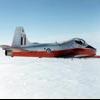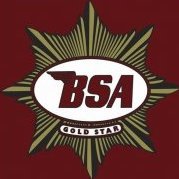Leaderboard
Popular Content
Showing content with the highest reputation on 18/03/20 in all areas
-
When the British Graham Land Expedition (BGLE) was planned in 1933 Graham Land was believed to be the largest of a group of islands lying to the North-West of the Antarctic mainland and separated from it by three channels, the main one of which was the Stefansson Strait. In addition to surveying the West coast of Graham Land and extending knowledge of the whole region it was the intention to explore the passage through the Stefansson Strait to the Weddell Sea which might be used by future expeditions as an alternative to the eastern approach to the Antarctic continent which had proved so disastrous for Shackleton. It was also planned to carry out extensive research in a number of scientific fields which included: geology, glaciology, zoology, meteorology, ornithology and the biological sciences. The expedition team comprised 16 men led by John Rymill, an Australian. The budget for the three-year expedition was limited to the remarkably low sum of £20,000, which had to include the cost of their ship and an airplane. The aircraft - a De Havilland Fox Moth (G-ACRU) capable of operating with skis or floats - was used extensively for reconnaissance, aerial surveying and depot laying. Plane trips were limited by the safe range of the aircraft which was some 280 miles or three and a half hours flying time. Often weather conditions precluded flights for many days and other limitations included low cloud and unsuitable landing surfaces. However, the aircraft proved invaluable for route finding, surveying and depot laying and was used with skis and floats as conditions allowed. A major discovery of BGLE was that the channels (reported after the pioneering flights of Wilkins and Ellsworth) between the Bellinghausen and Weddell Seas did not, in fact, exist. Thus, Graham Land was a peninsula and not an archipelago. Much of the coastline of Graham Land was mapped. Considerable work involving the various scientific disciplines was conducted including studies of seals and birds. Fossil plants were discovered and important geological facts revealed. All these topics were extensively reported in the literature. BGLE proved to be of great significance with many achievements to its credit. It bridged the gap between the heroic age of Antarctic discovery and the present era with its well-funded and comprehensively staffed permanent bases. Using new approaches to travel and diet it avoided many of the problems faced by earlier explorers. Despite the severity of the environment and the three year duration of the expedition, the party returned to Britain without injury or experience of deprivation. The expedition is well-documented in photographs and many images of G-ACRU exist. For this build, I used Avi Models's 1/72 DH.83 Fox Moth, Floating & Skiing Version, which includes decals for G-ACRU: My WIP can be viewed here: That's all, Folks!37 points
-
British with some dutch flavor. Dear Modellers, The BAT F.K.26 was a British single-engined four-passenger biplane transport aircraft produced by the British Aerial Transport Company Limited of London at the end of World War I. As The First War drew to a close the aircraft designer Frederick Koolhoven designed a civil four- passenger wooden and fabric civil transport, the F.K.26. The four passengers had an enclosed cabin and the pilot sat above and behind the cabin in an open cockpit. The prototype (Registered K-102) first flew in April 1919. The second aircraft was displayed at the First Air Traffic Exhibition in Amsterdam in July 1919. The third machine (also known as the BAT Commercial Mk 1) was displayed at the Olympia Aero Show in July 1920. The fourth aircraft (Registered G-EAPK), built in November 1919, was the last aircraft produced by the British Aerial Transport Company (BAT). G-EAPK was sold to Instone Air Line and was based at Croydon Airport for charter work and scheduled services to Paris. When the company closed, Koolhoven returned to the Netherlands. He later bought G-EEAI (the prototype) and exhibited it at the 1937 Netherlands Aero Show. (Wikipedia) It was a complicated build, building the fuselage and in the same time building the passenger cabin interieur was well, interesting. 😉 But I had the same situation with my Boeing Model 40C. I build the fourth plane because I liked the blue- silver paintjob. It was one of my first excercises in printing the decals with my PC. The result was not perfect but it passed the exam. I hope you will enjoy the photographs ! Kind regards JohnHaa34 points
-
Evening all, A recently completed new tool Airfix Buccaneer S.2 finished as XV357 612/LM of 803 NAS at Royal Navy RAF Lossiemouth circa 1971. The build is pretty much out the box other than the Xtradecal markings, some Tamiya tape seat belts and two 1000lb'ers from a RAF Phantom kit. Absolutely loved this kit, some great features, one being those beautiful inlets and fans, the airbrake deserves the time taken to drill out the recesses, the gear bay is a tremendous bit of engineering and the wing folds are lovely. I had never intended to build one of these, I'd planned to wait for the RAF version, but every build review and article I saw just made it too tempting in the end..... and its so good I've ended up with another one, and I'll still be purchasing a few of the RAF examples when it shows up 😉 Painted with Gunze Aqueous Hobby Colour Extra Dark Sea grey and a Satin coat from a Humbrol rattle can. Kept the weathering to a bare minimum as pics appear to indicate these were well looked after being carrier borne aircraft. Hope you like the pic's, feel free to pick holes in it, and there is a glaring error that I still cant believe I managed... but I did and a bit too late to rectify! Eng33 points
-
Hello modellers: This is going to be my first contribution on this lovely forum. I have been only airliner modelling for almost 15 years and this is my 5.th completed model. Yep I am a kind of rivet counter modeller Although It takes some time for me to built, kit was straightforward and it was fun to build. Painted with Revell enamels (04 for fuselage 371 for wings) and applied thin clear coats of Tamiya X-22. Following the application of clear coats oil wash applied. I am not satisfied the quality of Gio decals. Although it is thin and colors are vibrand I was really disappointed and it seemed to be completely unresponsive to Microsol. Whatever I tried, final result was more silvering decal, not even smooth surface. The model actually is still incompleted because winglet decals were destroyed during the application. I am planing to DIY project to reproduce them. Hope you like it Greetings from Germany Berk.22 points
-
A little something I've been working on for about three weeks as bit of light relief.22 points
-
Hi The Heinkel He 59 was constructed in 1930, so before re-militarisation of Germany done by Hitler after 1933. It was designed as recce and patrol bomber machine able to use floats and wheels, however she is known mostly as floatplane. After the outbreak of Spanish Civil War in July 1936 already in October ten He 59s appeared there withing group AS-88 (Aufklarungstaffel 88 - so by name a recce squadron) in Legion Condor. They were based in Pollensa on Mollorca. They were able to carry 1 t of bombs or torpedo and front MG was replaced by 20 mm gun. In fact they were used mostly as patrol-bombers to attack merchant ships transporting supply for Republicans. During operations 27 He-59 were used within AS-88, 17 of them were lost however they sunk 52 ships. They were also used in some actions like regular bombers, for example in a raid over a bridge in Catalonia, bombing raids on Tarragona (nice city, BTW) and so on. The model is from 2001 by Special Hobby, so one of early their production. Jas to be corrected in small things like for example adding doors on right side of fuselage and adding additional windows. It is a short run, to be frank rather difficult to build with right angles between floats, fuselage etc... To get it some od struts of floats I made from scratch. Besides what was in instruction I based on the article (ie: mostly on photos and drawings) published in Air Magazine No 15 from August 2003 (by Juan Arraez Cerda) and on another one from FlugerRevus X 73. So, what to say? - apparently I was waiting from 2001 (when I bought model) and finally at least from 2003 gathering courage to undertake this construction... (when during duty visit to Manaco I've bought this Air Magazine).... Here is result: It is surprisingly massive machine, if you compare her with for examle Sm 81 or Sm 55 among whole my collection of SCW (it is No 42): About riging - I did it using EZ before upper wing was glued together. Recently I am doing it this way. This makes me able to strech cables without drilling upper part of upper wing. I did it the same way in case of my two other build - Supermarine Sea Otter (already presented on RFI) and Stranraer (not yet shown here) Comments welcome Regards Jerzy-Wojtek21 points
-
I do happen to have a bit of an obsession with Meteors, having built a raft of 1/72 versions and recently a brace of 1/48 versions including a PR.10 conversion. The Tamiya 1/48 models of the Mk.I and Mk.III have a great deal of commonality, not least sharing the same Welland engine. That is fine if you want to model one of the 616 Squadron Mk.IIIs that wento Belgium in early 1945 but there were only 15 of those and the vast majority were powered by the later Derwent engine. There are, however, some nice hidden features with both models: not included in the instructions are the shortened jet pipes of the Derwent engine, plus a pair of vents that Derwent 1-powered aircraft had on their nacelles. Airfix's F.8 model contains an excellent pair of Derwants and I contacted their spares department to purchase the relevant moulding frame for the engines. This allowed me to build a Tamiya Mk.III with Derwent engines and below you can see the difference. The engines are not strictly correct. Mk.III Meteors used the Derwent 1 engine, while Mk.8s had the Derwent 8. Strictly speaking, these were different engines as later Derwents were effectively scaled-down Nenes. One comparison is to look at the jetpipes of early and late airframes: the later engines has jetpipes probably 50% larger. Nonetheless, I have photographed my latest Mk.III alongside a Mk.I made last year. Note below the nacelle vents and shorter jetpipe. There is a full set of images here. I hope this is of interest. KInd regards, Neil17 points
-
I completed these Bronco Models cruiser tanks last year and for the most part found them to be enjoyable builds but there were certainly times that my patience was tested. The A13 was my first attempt at weathering a dusty desert appearance, not sure that I quite pulled it off. Painted with MRP paints and weathered with MIG pigments. A13 MkII Cruiser Tank Mk.IVA A10 Mk.I16 points
-
Just staying at home, thankfully I have a large stash of models to keep me busy but no more going to the LHS for that one-off paint color – it is going to have to be mixed. I either have it here or I will need to do without or wait for mail order to arrive. Am waiting now of a decal set for my next project so here is my latest effort, the Mirage Hobby Halberstadt CL.II. This served as a German ground attack aircraft in WWI. A two-seater that had the pilot and rear gunner in the same extended cockpit. There are problems, one in particular is the fuselage band is not far enough back. Also, I have concluded that I hate doing lozenge but what choice do you have if you want German aircraft from later in WWI. The kit is expensive to begin with and then they don’t include lozenge decals. And this particular aircraft had bombs which are also not included in the kit (I scratch built a few). The decals for the fuselage which try to duplicate the stipple (dot) paint scheme is going to be hard to get right as they are not sperate by panel but continuous so I scraped that idea and used large old brush from my wife and it worked OK. Also, there is no way the wings are going to stay put unless you insert pins, which I did. That done it seems to stay together. Comes with lots of photo-etch with I used some of. I am also not convince all the colors are right as they only have Vallerjo call-outs and they don’t easily translate to Tamiya (which I have lots of).14 points
-
Great kit complete with resin and white metal towed bomb. Added PE set and finished with MRP paint.12 points
-
My first finished model this year - 1/72 F/A-18F Super Hornet, VFA-2, USS Abraham Lincoln, Indian Ocean 2005. Hasegawa 00799 kit + Eduard PE parts + resin flaps by Res Im.11 points
-
Latest off the bench is the Eduard 1/72 F6F-3 Hellcat (Weekend Edition). I used this build as a palate-cleanser after fighting with an Italeri kit for my previous build. I wanted a nice, simple build where I could focus on the finish rather than copious amounts of filler and sanding etc. Fit was very good, only slight sanding required to remove seam lines. I tried black-basing to see what effect this technique has under darker colours, but found it difficult to get much tonal variation. I originally finished it as a clean model, but wasn't entirely happy with it. After sitting on display for 24 hrs I decided to use it as a test bed for some post-shading and highlighting techniques with oils and pastels on the upper wing surfaces. Also attempted some exhaust stains with chalk pastels and chipping with a sponge. I generally struggle in the weathering phase, so any tips or tricks would be appreciated. Built OOB with the exception of antenna wire with EZ-Line. Cheers11 points
-
Finished at last! RFI is up and can be viewed here: Many thanks to everyone who followed this build and provided helpful comments, suggestions, or simply encouragement!11 points
-
Fun build, took almost a year to complete on and off due to uni. The HUD was lost during construction and despite my best efforts, couldn’t scratch build one to fit. Anyways, hope you guys like it. http://MIG-29UPG by Pranay Kumar, on Flickr http://MIG-29UPG by Pranay Kumar, on Flickr http://MIG-29UPG by Pranay Kumar, on Flickr http://MIG-29UPG by Pranay Kumar, on Flickr http://MIG-29UPG by Pranay Kumar, on Flickr http://MIG-29UPG by Pranay Kumar, on Flickr10 points
-
Nothing directly about Ark, but there is some good news and some bad news. The bad news is that I have (& have had for 25 years) a compromised immune system, so I am now officially self-isolating, probably for the next 12 weeks. The good news is that, though some of Ark remains in London - notably the two hull halves and the flight deck - I have managed to get a lot of the model home safely, including all of the Tetra brass. The island, boats, Swordfish and weapons should keep me occupied for easily 3 months!10 points
-
I was on a Russian kick last year so here is my Trumpeter Su-22M in 1/48 scale. I used an Aries cockpit as the kit does not come with seatbelts but honestly the problems with the kit is not the cockpit. The design itself is odd, most swing-wing aircraft kits will make the seam along the side but not this one, it is right down the middle and I need lots of backing pieces of plastic to keep it together that hold the putty for sanding. Also, there is no trunking for intakes, which is an odd omission. Also, all the stencils are nothing more that small lines, or random x’s and *’s so I could have replaced those but did not. Otherwise it is a pretty good kit. However, I wanted to build a specific aircraft, which is White 83 that was shot down by a Turkish F-16 on November 24, 2015. For this I used the Begemot decals, which are excellent and well worth using. The aircraft itself and those that deployed to Syria flew in tucked under the wings large Russian transport planes so they never showed up on radar. I can not imagine flying that distance in close formation, it would be exhausting and nerve wracking but they did it, and the first anyone know there were Su-24’s in Syria is when the showed up in satellite photos. I think Russia intended to turn them over to Syria as they painted over all national markings but they must have soon determined that if they did that the Americans or Israel would simply destroy them on the ground or the Syrians did not have the pilots for fly them so soon after arrival the Russian markings re-appeared. The aircraft are Su-24M’s but they are different than older versions in that they lack the over wing fence and based on pictures the load-outs are quite a bit different that what you would have seen on earlier Russian Su-24’s. I do want to say something about the pilot: Lieutenant Colonel Oleg Anatolyevich Peshkov, was killed by ground fire. He was killed as he parachuted to the ground after a successful ejection (which is against the Geneva Convention as if that matters to the so called “Freedom Fighters”). Oleg Peshkov was posthumously awarded the Hero of the Russian Federation, the country’s highest Order of Courage. His body was recovered and he was buried with full military honors in the Alley of Heroes of the cemetery in Lipetsk. He is survived by his wife and two children, at the time of his death a boy of 8 and a daughter of 16. Two Mi-8’s were sent in to rescue the WSO and Pilot and one of them was damaged by small arms fire with resulted in the death of a Russian Marine and a force landing. Everyone else from the crashed Mi-8 was rescued. Su-24’s have continued to serve in Syria and one was shipped back to Russian with over 1,000 strike missions. They are currently being flown by Syrian pilots and recently two more were shot down by Turkey over Idlib.9 points
-
My missus has a 97 year old aunt. 'Er indoors 'precautions' when she visited her yesterday to take the weekly food shop was that she sat in the kitchen while talking to her aunt who was in the living room. As they are both a bit mutt and jeff, that must have been a fun conversation! 🤣 And is toilet roll now more valuable than bottles of original Klear? Wondering what to list on e-bay to boost my pension pot....?! Keith9 points
-
OK, had a few hours to spare so I set straight to work on the cockpit. The kit calls for five parts (two seats, a floor piece, a radio bulkhead, yoke and instrument panel) to represent the complex command deck. Not on my watch! I started by adding stringers from stretched sprue, adding some rectangles snipped from soda cans to imply gauge boxes on the sides. I added a little flooring to the right side simply to conceal the long bump where the alignment pin is. A thicker piece of stretched sprue was added for the handrail from the command deck to the forward gun area. - Looking at some other builds in this STGB inspired me to detail out the pilots seat a little bit. It's a little crude, but that probably will be par for the course on this build -- lots of stuff with little regard for 100% accuracy. I did take a stab at the little supporting rods that run from the seat shoulders to the headrest, as well as some of the braces and tubing behind the seat. - Break out the brushes. Forgive my sloppiness. I'll admit it looks a bit like an impressionist painting (done by a 5 year old) but it has been a while since I painted anything that wasn't digital. Is it just me, or did 1/72 get really small sometime in the last 50 years?!!! I added a bit of woodgrain paper for a wood tabletop and then a bit of folded paper for a map. The stringers got a little splash of AK Engine Oil to add some grime and depth. After that I added to floor-to-ceiling poles on one side, and a baffle on the other. - Up front, the instrument panel was glued only to one side of the fuselage. It pains me to say that I've definitely lowered the level I'm willing to accept on this (even the photo came out mediocre 😞 ). As long as I had it rubber-banded together, I shot this next one with a flash to make the desk visible even though once the halves are joined no one will ever see it again. I'm not closing it up yet, but this is probably about as far as I will go on the front office. - Man, these huge enlarged photos really look BAD. Those of you that build in 1/72 regularly and have nice clean paint jobs must be true masters!!! ---------------------------------------------------------------------------------------------------------------------- So here are a few of my own photos that I used for reference. Being stubborn, I didn't always recreate what I saw, but hopefully these might come in handy for someone else. Lancaster B Mk.1 DV372 (nose section); IWM London 2019 ----------------------------- Lancaster B Mk.10 KB889; Imperial War Museum Duxford 2008 ----------------------------- and closer to home, Lancaster B Mk.1 TW911 (nose section) at the Flying Heritage Collection - - and my son with the Lanc nose back in 20129 points
-
Hi folks My latest build is a model of a legendary fighter aircraft, McDonnell Douglas F-4E Phantom II in Iran Air Force color. Been flying for more than 40 years in my country, a hero of 8 years war with Iraq and still going strong! This model represents the early days of conflict when these Phantoms used to bomb Iraq with british made BL755 CBUs. The Hasegawa phantom is a straight forward kit to build. What else I used are: -Master pitot tube -Hataka and Gunze colors -Print scale (Mr.Khosravi) decals -Eduard stencils -WINGMAN BL755 cluster bomb units Sorry for non professional and low quality pictures. Hope you enjoy seeing this model. Regards Barzin With his mates...🙂 The real LOVE❤️8 points
-
I first built this kit in 1969 and then retrieved it from my parents' attic in this state back in 2014. Here she is rebuilt. Using decals courtesy of a fellow modeler, I was able to finish her in the same markings as the first time I built her. She's finished as AR-G W4783 and served on 90 operations with a Royal Australian Air Force squadron in WW2 before being retired and sent to Australia. She's preserved in the National War Museum in Canberra. Far from perfect but the nostalgia factor outweighs all her faults for me. David8 points
-
Crossing the finishing line Gloss coat this morning to seal in the transfers, then matt coat about an hour later Which meant that the very last job on the list could be crossed off - adding two aerials on the booms. These were made from stainless steel wire. I considered painting them black, but the few photo's I have which shows that there were aerials in this locations shows them as a light color. At the risk of splodging paint on the fuselage somewhere I opted to leave the wire paint free. Now follows a bunch of shots from various angles This angle I quite like Masking came off the canopy quite easily for a change. I'm glad I took the effort to mask in the actual glass shape and not simply follow the kit lines which were wrong There folks! That's all. Done and dusted. Now to move on to something else - primarily the train but I'll need to figure out what the next aircraft build is to keep me sane when the train overpowers me8 points
-
Hi all, The Avro Avocet was one of those many obscure interwar British prototypes that failed to win orders and so never went into production. The design was Avro's response to a 1926 Air Ministry specification for a single-seat naval fighter. The wings did not fold but could be dismantled for shipboard stowage, made simpler by the absence of wing bracing wires. The first prototype, N209, was constructed with wheels and first flew in Dec 1927 and the second, N210, flew on floats in April 1928. Wheels were later fitted to N210 and both airframes were tested at Martlesham Heath in Feb 1929. In Sep 1929 N210 was refitted with floats and moved to Calshot, where it was used by the RAF's High Speed Flight as a practice machine for Schneider Trophy pilots. This model represents a few 'firsts' for me. It is my first completed 1/72 scratchbuild, my first attempt at home vacforming and my first use of brass strut material. Its construction relied heavily on the inspiration, tips and straightforward generosity of fellow Britmodellers - thanks, all! Firstly, I built a simple home vacforming box and male fuselage moulds, using 40 thou plastic card and P38 filler, inspired by AdrianMF's awesome Shorts Empire build: That gave a satisfying acceptable result at the first attempt. Wing blanks were cut and shaped from 60 thou plastic card: Struts were made from stretched sprue, sanded cocktail sticks and soldered brass strut stock (thanks, John!). The engine cylinders were made - pretty roughly, I accept - from plastic rod and stretched sprue and, taking on board bristol boy's idea from his Felixstowe build, I used an Edding paint pen to give a slight rib tape effect: Wheel covers were plunge-moulded using a sanded piece of paintbrush handle and rubber o-rings were used to make tyres. The undercarriage struts were carved from thick sprue: So after all that faff, here is the finished model: The exhaust pipe was made, with much cursing, from plastic rod. The propellor blades came from the spares box and the spinner was cut from an old drop tank. I'm afraid the serial number on the rudder doesn't stand up well to close scrutiny; I printed the codes from my PC but couldn't get a white outline, and my painted efforts were less than expert. Oh well. I also stopped short of trying to replicate the variations in the many metal panels on the original aircraft and simply finished the model using Humbrol Metalcote Polished Aluminium applied from an aerosol can. It won't win any prizes, and some of the details are basic at best, but it has been an enjoyable learning experience. Rather annoyingly I've just discovered that the upper wing had full-span ailerons rather than seperate ailerons and flaps, as I have modelled it; I suppose I should have read my references more thoroughly! Here's a final pic showing the Avocet alongside my Warbirds vacform Sopwith Snipe: Thanks for looking! Jon8 points
-
Rhinos of the 39th Tac Fighter Squadron, 35th Tac Fighter Wing out of George AFB. Participating in the large force exercise Red Flag 83-4 at Nellis AFB, June 1983. 67-0376 67-0381 67-0396, squadron flagship 68-0338 with MiG kill 68-0345 68-0371 68-0409 68-0410 with Pave Spike 68-0473 68-0474 69-7251 Thanks for looking, Sven7 points
-
There have been a number of these builds lately, and they've inspired me to get on with one. I think the shape of the Tornado, the F3 in particular, is one of the most beautiful of military jets. This one took about 3 months to make, but 7 weeks of that time was waiitng for a spare part from Revell. One of the hinge pins was broken in two, and I couldn't find the other part of it in the bags. This part is very important for the swing wing, and the swivelling weapons pylons. Revell kindly sent me a replacement part, and I have a fully-functioning kit! I like the kit's detail with the positionable flaps and slats, but I wanted to be able to sweep the wings. Putting these parts in the retracted position however has left some sizeable gaps.7 points
-
7 points
-
Cheers Russell not sure my model will be a patch on your build but the kit is a good one for its age to start and add on as much as you want and stay safe yourself mate @George NormanI think @Jamie @ Sovereign Hobbies and@foeth have it spot on with the ships boats I have gone with the white as there are photos in books and on the web of these being this colour which would tie in with the time period of KGV being in the BPF scheme after her 1944 refit plus I think just the sheer size of the ship would give it away to spotters before they could see the white bits. I have also seen photos of destroyers with the white whalers from much earlier in the war? I know exactly what you mean Stuart Cheers Rob as for the wedding looks like it will be postponed to later in the year As for work I go back tomorrow 2 days early to save a couple of days holiday for the above change and also a request from the shop manager the Casting plant is behind in production so this gives them a chance to catch up not building the cars. Well small slow update making up the Pompoms the kit part and the WEM PE added and I thought the HACS where fiddly beefy7 points
-
MarhSH, clay modelling is a skillset unto itself, the type of clay, building an armature and just getting it to look correct, especially a human figure, is not easy to achieve. This may indeed be the better way. Start with a plastic kit and modify the heck out of it. Here's a 360 view of this Captain Gene Cernan model ... I may spray on some 'moondust' and dirty him up a bit ... but I'm liking how this turned out. Many thanx for stopping by and offering your comments ... onto the next one! IPD7 points
-
Hello! Here is another my model! This is a test assembly of the new model from Clearprop models. The assembly was easy. The only thing was to pay more attention to the rotor of the rotor. There is a lot of etching and it was necessary to assemble everything very carefully. The same for the tail rotor. The spider is made of etching and it is very small. In addition, the part had to be bent in several places. I painted the model with MR Color paint. I ddonemodel not dirty . The helicopters in all the photos that I saw are clean.6 points
-
To read the build report, see here. Point of view:6 points
-
Evening all, One of the advantages of all this isolation is freeing up time for activities at home. Build five for the year and it's another Flanker, this time the two seat Su-33UB trainer version. Arguably the ugly duckling of the Flanker family, but still a beautiful beast. A bit of a rush job in the end but frankly I wanted off the bench, having started it alongside the single seater a few months back but struggled to find a close enough match for the paler blue which caused the delay. Finished as is now customary with Hataka Orange Line and Alclad lacquers with a final coat of W&N Matt varnish. 1/72 Trumpeter Sukhoi Su-33UB Flanker by Shaun Schofield, on Flickr 1/72 Trumpeter Sukhoi Su-33UB Flanker by Shaun Schofield, on Flickr 1/72 Trumpeter Sukhoi Su-33UB Flanker by Shaun Schofield, on Flickr 1/72 Trumpeter Sukhoi Su-33UB Flanker by Shaun Schofield, on Flickr Thanks for looking comments welcomed, Stay safe all, Shaun6 points
-
Bill, Michael, Giorgio, Serge, Crisp: thanks for your comments guys. Troubleshooting online systems and generally in a comms vortex at work so no headspace for Vixenry until the weekend. Currently at Condition Leonard: Ps. 'Furiously' contemplating this as future scratchbuild subject complete with airship: The RN's steampunk phase + dazzle paint is irresistible... Adieu mes braves, Tolyan6 points
-
Right side tracks are now complete and driver (not visible here) and commander added.6 points
-
Exciting times at Bangseat towers, as my 3D printed fuselage extensions arrived today! This is 'Fuse 1" between cockpit and wing: And this is 'Fuse 2' (the plug aft of the wing): The forms were designed to fit the slightly irregular contours of the Mach 2 kit, so they do have a few wobbly bits. Quite how helpful this will be when I join up the pieces will remain to be seen, filler, sandpaper and probably a bit of filing will still very much be required. This is undiscovered country for me, all very new and intriguing. These are FDM printed, on their end so with minimal supports needed. They of course have very prominent layer lines: I had a quick first go at sanding them. Its not as easy as normal styrene, but it does submit eventually: Most of the lines do come off with sanding, however I notice some striations - more so in certain areas - are quite deep and will need a different approach: I will have a go with Halfords filler primer next - a Mach 2 essential - and see if anything else will be required. I hope it doesn't come to trowelling on P38, but these lines have got to go! Here are the parts all laid out - although I'm not assembling anything until the individual parts have been prepped: As well as the FDM parts, the kit styrene is being tackled. The wings have gone together after being sanded back - all Mach 2 parts need a full job of finishing, with several grades of sandpaper, filler primer, polishing - its car bodywork, basically! Here's a wing with what I think is an air conditioning vent detailed in: It needs lighter sanding and priming next. I find Mach 2 panel lines are quite resilient to this treatment and just need light rescribing afterwards. The nose saga continues - I redid my master with revamped (slightly bigger and possible more symmetrical) windows, I forgot to photo the final item and it is now snug and warm under some curing silicone, but this was it at the half time whistle: I think (hope) I readjusted that middle one! What happened after was several layers of perfect plastic putty, variously smoothed and sanded, and a couple of coats of filler primer. Then the masking tape on the surfaces of the styrene sheet windows was lifted, to reveal the smooth surface slightly recessed from the surrounding filler. Quite a delicate operation lifting the mask without damaging the surrounds, and of course hard to find the edges of the mask under all the filler, but it went OK. I should have a new nose plug in a few days. All the components are nearly assembled. Now a marathon of sanding (marathon des sables?) begins. Much as I love a proprietory sanding stick, for working in bulk like this I make my own from sandpaper PVA'd to neoprene rubber foam sheet. I can then cut it into a stick, a pad, I might even stick it to a pair a plimsoles and do the soft shoe shuffle over the larger surfaces: With that I leave you. I must sand like the wind. There will be dust, car filler, rasping files, maybe some wattle and daub... But with the nation in lock down, no time like the present. All best, Harry6 points
-
6 points
-
I haven't done too much with this lately, been pre-occupied with a DIY project in the living room, and my Phantom that I had been putting off as I'd reached a tedious fiddly bit. However, the running boards are glued in, and filled ready for sanding when its cured. And I decided to have a dry fit run of all the body work still to go, and get any sanding and fit sorted prior to painting. Seems to sit very well as the front, but the hood at the back needed some sanding so it sits flush to the body, and the panel on the back of the hood needed some gaps seeing to so its been filled too after these pics were taken. I've got to say, the more i work on this the more it grown on me, the car that is. Its looking pretty elegant already...6 points
-
Hello all, here’s an update on my madness to put the outside world into perspective .. I can report I am declaring the cylinder cowls done. Just awaiting the fuselage to be similarly finalised before they are affixed. To get here involved: Semi-gloss clear coats, polished to gloss. This may seem a new innovation in lunacy, but my logic is to use the same semi-gloss clear all over the machine, then selectively polish up any metal-skinned components, to contrast against the enameled fabric skin (the residual semi gloss). That done, I then set about suggesting substance within the helmets, specifically by providing depth to the exhaust openings. Like so: A tiny hole of requisite depth drilled into a scrap of timber, ready for styrene tube selected for internal diameter matching the hole in the cylinder cowl: .. so I could microsaw a known - tiny & squat - length of tube .. .. and repeat for all 18 ‘exhausts’ .. .. which were then cemented to the thinnest of styrene scrap sheet as backing .. .. painted flat black within .. .. then each snipped off in turn, & with this sophisticated peg & toothpick jig they were positioned in place .. .. x18 .. then some ‘dark iron’ paint just in case the slightest view of these might be possible after installation (I checked & am as near to certain this will be impossible .. but just to be sure) .. .. to give x9 little egg-shell cylinder cowls - done! Happy that the pre-painted black has left the white rim to the opening in the cowls .. this would have been lost if I’d just blacked them in from the outside after assembly. The effort may not seem so justified in that static image, but it’s when you move your view around them the investment pays off. Done!6 points
-
You're not wrong... It's a beast! You remember this big open space down the sides: The kit provides a single fascia part to cover the whole side. Looking at all those angles and corners you can't help being sceptical of the fit... But look at that. Seamless. Hats off to Academy for this one. Both sides fitted and the rear fuselage is complete. Great kit, just what I needed to take my mind off the horrible Vulcan kit I'm building at the moment! Cheers for looking in, Alan6 points
-
Right chaps, no lighting, no interior, no hot tub on the rear deck on this build or even a rubber duck sat next to the commander, just an "almost a vanilla build, almost from the box " I've started to build up the running gear on the lower hull, bump stops are in place on one side along with the return roller mounts and sprocket hub, its very nicely detailed and I'm impressed so far, some flash on a few parts but nothing to complain about. Enjoy Dan6 points
-
Having come, nefariously perhaps, up with info on the better to be observed model-able things in the engine area pictures have alighted of the engine installation for the Bilvedere which I will endeavour to represent These devices although having exhaust pipes at the top like the Gazelle look almost totally unlike the Gazelle at all, seems the Gazelles were fitted into bespoke tinware heaven sent to avoid modellers getting hairs into twists Hereby the full monte with, in the centre, the closed up real thing Clear as mud huh? I note that at the bottom, the dirty air in end there is a big mesh filter with chrome coloured retaining rings, had me fooled I had thought the silver rings I could see inside the covers was the metal at the actual air intake Now I have better info I will crack on adapting what I have, it should not take long...6 points
-
think a bit like the "Flower duet" from Lakmé but with aeroplanes. Hello everyone and welcome to my project. It was a simple project at first but then it grew in scope and then the problems begun and the learning curve was steeper than expected and... but lets take things from the beginning. An old friend of mine was moving with his family into a smaller apartment so he shed off all his old 1/72 kits in the process and they ended up lurking under my then bench. I'm talking really horrible ancient kits like the Airfix He177 Greif (or more aptly 'grief') and the like (seriously now that kit taught me a lot but there was no way I could salvage that big lump of light blue plastic). But other kits were not so bad and some were even maybe appealing. Now 'appealing' as we all know is a strange term. In my case it was something about the history, or the colours, or the shape. So I thought I would build the Heller Potez 631: I convinced myself the decals were aged and deteriorating so I bought a decal sheet by Carpena / Colorado. (https://www.hannants.co.uk/product/CA72041) Then I had the idea of trying a resin engine for the first time. I wasn't going to open any cowlings heaven forbid, no! But I thought this would be a good time to try. So I got two of Neomega's Gnome-Rhone GR-14M4/M5/K/N (https://www.neomega-resin.com/gnome-rhone-gr-14m4m5kn-172nd-679-p.asp) And as for paint, I got myself a HATAKA french camo set (http://hataka-hobby.com/products/early-ww2-french-air-force-paint-set/) Right. So now I had everything I needed. Right? Wrong. I though that since I got the french paint set it would be a good idea to do another french WW2 aircraft in parallel. You know, during the dead time, while waiting for the glue to set, while waiting for the paint to dry etc. So i decided to build the Smer 1/72 Bloch MB.152 on the side. But I couldn't just leave it at that, nooooo. I thought I'd try replacing the kit's canopy, windshield etc with vacform transparencies. Also for the first time. And to top it off, besides the almost obligatory decal sheet (https://www.hannants.co.uk/product/PSL72320) I got me a photo etched parts set from Brengun NOT designed for the Smer kit (https://www.hannants.co.uk/product/BRL72090)! What could possibly go wrong?5 points
-
Greetings one and all, Hope you are all keeping well! So while tinkering with my Avenger and other projects starting to dry up, I decided to jump back in with another “very quick” build. I dug through my stash and having just finished an enhanced Sea Venom from the old Frog molds, I thought I would have a go at another Frog origin Eastern Express kit in the form of the Supermarine Attacker. The First Royal Navy Jet Fighter! So this has been in my stash for an absolute millennia. The kit is very basic indeed, a molded pilots head is all that the ‘Cockpit’ contains and the undercarriage areas are just stick on doors! So whilst in my blissfully ignorant youth I bought an Airwaves photo etch set. Now my experience since that time has been not to trust the Airwaves sets to be anywhere near accurate, so we shall see how we get on. So here is what I have to play with: Whats that? You cant see the decals? Well there may be a very good reason for that! They seem to have adhered to the instruction sheet! So I will be looking dig out some spares, I am sure I have a Microscale or some other kind of set. Which ever she will, of course, be a Royal Navy bird Over complicated instructions (with decals still attached!) So whats up first? For this build not the cockpit straight away, I want to sort those intakes and exhaust first before I even think about joining the halves to eliminate a gaping chasm of seethroughness (is that even a word?). The exhaust for now I can just leave as I will replace this at the end with some 6mm ally tubing which will be blanked off appropriately. For the intakes I got the files out and cleaned them up so they weren’t so thick. I don’t want to go too deep into the intakes shape as not much will be see so I will keep it to Billy Basics, I shaped a semi circle type blank and also added a strip to act like an intake wall. This will be sufficient, I’m going to try and spray the deepest recesses very dark and then when I spray the airframe, just allow overspray into the intake to give a perception of depth …… well that’s the theory anyway. The left side is currently in progress but the right one is shown in all its molded glory The shaped intake sidewalls You can see the blank installed here before fitting the intake wall Then it was onto the cockpit …. Or first cut out the poor guys head and create a cockpit opening. The Airwaves set provides a full cockpit set up, so this was assembled and painted cockpit black. I left the final folding to until I had it painted so I wasn’t trying to paint into awkward corners So once the etch was assembled I trial fitted it …… and guess what! It didn’t fit! So I ended up chopping down the forward bulk head (again another reason I didn’t glue all the sides together before the trial fit, so it would be easier to make adjustments), I also had to cut away some of the etch sidewalls. The cockpit etch post trimming Eventually though I got to a point where I could install and join the fuselage halves, however the cockpit still didn’t want to sit well so I had to devise a devious method to get it in. I glued the whole rear fuselage behind the cockpit. The problem I had was when the halves were closed up this force the cockpit front down. So I secured the rear bulkhead to the airframe and where I had not glued the part under the cockpit I could insert a blade to force the cockpit into the right position and then secure with lashings and lashings of CA, Once that had set I continued with the forward section of the aircraft. So here she is all buttoned up. You’ll notice the instrument panel in there? Well this didn’t stay there for long so it is filed away somewhere safe for inserting later! And in all her final assembled flashy glory before the great rub down! That's all for now, catch ya's later! Bob5 points
-
Benz Patent-Motorwagen, ICM 1/24 Normally I'm building biplanes and other early aircrafts in 1/48. But my wife and me are interested in other parts of the technical history too and so we like to visit museums, oldtimer exhibitions and so on. Since my wife loves the Ford-T, I build her the Touring very soon after the release by ICM. This was a very nice experience, so the Delivery car and the Speedster followed later. Recently we was surprised by the new ICM kit, in the same scale, the "Benz Patent-Motorwagen" and during the last exhibition in Fürstenfeldbruck beginning of March I picked up this kit. Ok, let's start another build report. ICM tells in the manual overall black. It seems to be correct, according to the Motorwaegn in German Museum München: Source: wikimedia.org But it looks not that nice. Tthen I found a very detailed workaround here: https://www.scalenews.de/benz-patent-motorwagen-walkaround-66/ It seems to be a replica, but nice and colorful. So that will be the template. Sine this is a very dark green, I decided to use Gunze H65 RLM70 Black Green. The red parts will be paint in H33 Russet, for the metal colors Alclads will be used. The kit will be created from very filigree parts, where I found the mould displacement annoying. Not much more as on other kits, but here the parts are very small and fine. One example: Ok, now some real work! I sprayed the flywheel red, and after drying I cutted masks (electronic cutting plotter) to spray the outside iron: Looks usable to me: The engine is also build, painted and masked and painted, followed by detail painting with brush. I have stolen some ideas in Jörgens report, so I build also a bigger part of the frame to spray it in the mention Black Green. The wood was primed white, liquid masked and after the green airbrush session the wood was painted with acryl base and oils (together with the other wooden parts). Engine and flywheel are only for test fit. After hardening of the oils a layer Clear Yellow/ Clear Orange will follow and I can mount more parts. That is enough now for the first post ... Cheers, Frank5 points
-
… and the painting begins! I tried to find a way to replicate the colors of the Bristol exhaust ring.5 points
-
Finally close to starting the paintwork on this beast: A healthy dose of Mr Surfacer 500 and that smooth delta shape emerges from the mess of putty and yawning gaps Slight problem with the aft bomb doors but should be easy to fix. The intakes have been nothing but trouble, a major slog to try to remedy. This is the best I can do, I'll have to move on. Would you believe I cut the whole nose off and re-attached it? Happy with that repair job! The aft section is finally blended in, it's been another joyless slog to get rid of all the seams but it's there at last. This is not a kit for the faint-hearted, especially if you're trying to replicate the smooth, blended curves of the original. The new Airfix kit can't come quickly enough! Cheers, Alan5 points
-
Idiot boy here went too fast and rounded out the bottom of the camouflage pattern too low down... @beefy66 the cancellation of Perth gives me a bit of breathing space. After having hardly any trade orders since 2017 and generally living off what we had we've now had two large ones overlapping so the stocks are grim right now. Eek. There's a load of paint here but due to various limitations on vulnerable people I'm on my todd trying to get them done. I'd have liked to have made some manner of setting for this but there aren't many cheapo (because I be skinto with this house fiasco) British figures around. I am thinking I shall not do anything permanent with this boat right now, and I can decide later when I know how brassed I am. Maybe the Financial Ombudsman Services will find in my favour...5 points
-
Some progress now, I have started on the interior and will post pictures when finished. Looking at the canopy, even with polishing it is not going to be crystal clear and what with the framing I am not investing super detail effort into the cockpit. The seats have been cleaned up and thinned down and look better for it. I have trial fitted the canopy and it fits, well sort of. The props have been cleaned up and fitted to Airfix spinners as I had a set left from a Lincoln conversion I did a few years back. They fitted alright with some fettling and just need some filling around the roots which I think Perfect Plastic Padding will be best as I can apply it and wipe the surplus off with out sanding and probably breaking a blade. A trial fit on to an engine cowling showed a pleasing fit. The fuselage fit is much better after I clamped the sides together and put them in seriously hot water and levelled of the edges. Not perfect, but will hold the shape now with masking tape. instead of a clamp. The photos below also show how heavy the detail is on the central fin and the substantial sinkage thereon and also the changes needed to the undercarriage bay. The next thing I am considering is adding the windows before putting the fuselage halves together. There are a lot of them and the fit does not look brilliant. my feeling is that it is going to be marginally easier to put the windows in now, clean and polish and then cover them up until it is time to mask them before painting. Still a hassle, but I reckon better than leaving them till later.5 points
-
A mistake easily made once, then never forgotten! Thank heavens they are different colours... Regards, Adrian5 points
-
Good news today.: I got a big package of Tp early this morning for the next two weeks for me. Scary news: On my way home with the bike most people stared at me and some pointed their fingers at me. Should I worry? https://youtu.be/wA4KS546rZo5 points
-
Now getting into the final stages with A4-K. Managed to clean off the masks, add turrets and bomb doors and add a coat of Matt varnish. Now just the props, a few aerials and exhausts to do, followed by a little bit of light weathering and the end is in sight. Here a couple of shots of recent progress.5 points
-
5 points
This leaderboard is set to London/GMT+01:00

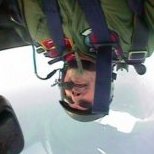
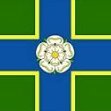

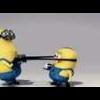


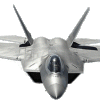

.thumb.jpeg.8799c240c730b916dd0efd9a2bcf19cf.jpeg)

.thumb.jpg.76f12b87ce9ca9929c9aabdcf8f9d2dd.jpg)
